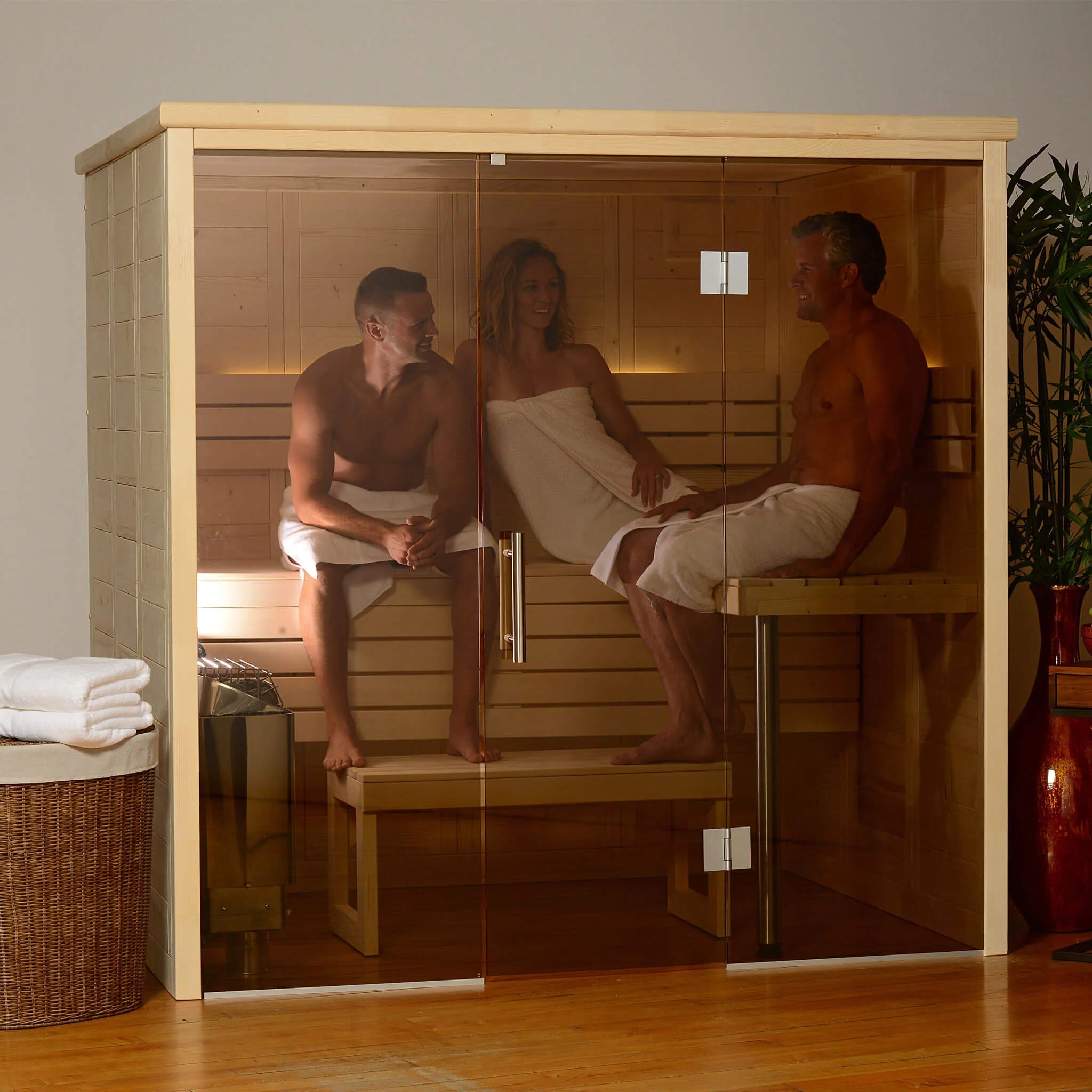10 Easy Facts About Traditional Sauna Explained
Table of ContentsThe smart Trick of Traditional Sauna That Nobody is DiscussingAbout Traditional SaunaThe Facts About Traditional Sauna Uncovered5 Easy Facts About Traditional Sauna Explained
Most of the weight shed in a sauna is water loss and is re-gained upon rehydrating. However, undoubtedly sauna can be an integral part of a healthy and balanced weight reduction program. To look at the distinctions between traditional and IR saunas, I will divide these right into proven, theoretical, and produced differences.Thus, the best factor in the saunawhich goes to the ceiling directly over the sauna heateris generally between 185 and 190 F. Traditional Sauna. Claims that a typical sauna goes beyond 200 F is simply not true and not applicable for electric saunas sold in the US. The temperature for a far-infrared sauna is typically set between 120 and 140 F; nonetheless, unlike the standard sauna, the objective in and IR room is not to achieve a heat
Due to this, the temperature level difference is nearly pointless, because excessive sweating leads to both sauna kinds, yet the technique of warming the body is various. In an IR sauna the bather will certainly feel hot and will sweat profusely, but at much reduced temperature levels. Hence, if the objective is to spend longer time periods in the sauna, the IR sauna is a good selection.

How Traditional Sauna can Save You Time, Stress, and Money.
When the high temperature level is achieved, the elements cycle on and off to keep the heat. A lot of typical sauna customers delight in pouring water over the rocks to create steam to increase sauna humidity levels. The benefits of pouring water over the rocks include: making the room extra comfortable, dampening the nasal flows, and enabling the use of aromatherapy by mixing necessary oils with the water.
In a far-infrared sauna, the warmth waves pass through the body to efficiently heat up the body and raise the body core temperature. To accomplish this boosted temperature level, Far-infrared emitters develop infrared power which is close to the exact same wavelength as that which the body normally emitsoften described as the "Essential Array" of 7 to 14 microns), so the power is well obtained by the body.
When the power gets in the body, it triggers the body temperature to enhance and ultimately leads to perspiration. In an infrared sauna it is very important for the emitters/heaters to remain on practically constantly. Considering that there is no mass of rocks check my reference to maintain warm, the sauna will cool down if the emitters shut down.
As stated over, the sauna bather in an infrared room desires to position himself before running emitters to obtain optimal take advantage of the warm. The heating time for both areas can be extremely different, relying on how the spaces are made use of. For a typical sauna, a bather must enable 30-40 mins for the space to accomplish a desired temperature level and to correctly pre-heat the rocks.
The 6-Minute Rule for Traditional Sauna
A well constructed sauna will typically attain a temperature level of 150-160 F in about 30-40 mins. For hotter temperatures, the room might require to warm for a longer period.
To some, 15 minutes was "wasted" while the infrared energy heated the timber panels rather than heating a body, while others find a pre-heated area to be extra comfortable and believe an elevated starting temperature is needed to begin sweating. The length of recommended use for every room is roughly the very same (10-15 mins per session); however, as a result of the lower air temperatures and the capacity to really feel the effects of infrared warmth much faster than a standard sauna, it is not uncommon for a person to spend a total amount of 20-30 mins in an infrared sauna.
Standard saunas often tend to be larger (thus use more electrical energy) than infrared saunas, although typical saunas are absolutely readily available in one Discover More Here and two person dimensions. For a two-person conventional sauna, 5x6 or 5x7 size is most prominent. The top bench can comfortably seat 2 or 3 individuals and is additionally enough time to Clicking Here relax during the sauna session.


The ordinary price per kWH of power in the U.S. is approximately $0.11, so a 4.5 kW heater will set you back roughly $.50 to run for one hour, if the heating system runs continually for one hour. Typically a sauna heating system will run for 75% of the first hour and 50% of succeeding hours on because the elements cycle once the established temperature level is attained.
Some Known Incorrect Statements About Traditional Sauna
A two individual far-infrared area is usually physically smaller sized than a standard sauna, usually concerning 4' x 4' or smaller sized. The IR heater is generally 1.5-1.7 kW utilizing a 120 volt 15 amp plug-in service. Given that the area can be used earlier than a sauna room, we will think the area is made use of for to of an hour including warm up time.
There is a rarely talked about distinction in the social experience between the 2 rooms. While our culture has actually lost several of the social advantage of the traditional sauna experience, it can be really socially rewarding. From family members time in the sauna, to heart-felt conversations with better halves, to sauna partiesthe standard sauna experience can result in intimate mingling.
Many greater end infrared areas consist of colored light therapy, audio systems and full-glass fronts.